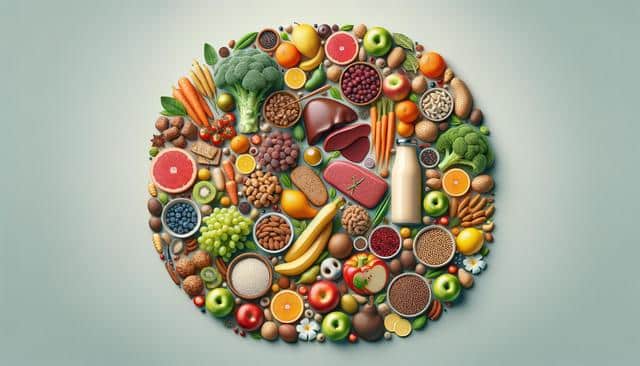
Useful Remedies That May Help Detox a Fatty Liver Naturally
Understanding Fatty Liver and Dietary Impact
Fatty liver, also known as hepatic steatosis, occurs when fat builds up in liver cells and can lead to inflammation or more serious liver conditions if left unmanaged. While there are different causes, diet plays a key role in both its development and reversal. Learning how to cleanse fatty liver through nutrition and lifestyle changes is a practical first step. A focus on whole foods, reduced sugar intake, and healthy fats is often recommended. By rethinking the way meals are structured, many people have found that the liver can be supported in its natural detoxification processes.
The best diet for fatty liver reversal typically emphasizes plant-based ingredients, lean proteins, and fiber-rich carbohydrates. Eating patterns that mirror the Mediterranean or DASH diets are frequently suggested due to their balanced approach. By reducing highly processed foods and refined sugars, the liver can better regulate fat metabolism and insulin sensitivity. It’s not just about what to avoid, but what to include—certain foods can have active compounds that support liver health.
Best Foods for Fatty Liver Support
Some ingredients are commonly recognized for their potential to help support liver function. These foods are often rich in antioxidants, anti-inflammatory compounds, and essential nutrients. Including a variety of them in the diet can be a helpful part of a broader wellness approach. Examples of best foods for fatty liver include:
- Leafy greens like spinach and kale, which are high in chlorophyll and antioxidants.
- Fatty fish such as salmon or sardines, known for their omega-3 fatty acids that may reduce liver fat levels.
- Avocados, which contain healthy fats and fiber.
- Berries, especially blueberries and cranberries, for their polyphenols and vitamin C.
- Green tea, which contains catechins that have been studied for their liver-supportive properties.
These foods can easily be incorporated into daily meals, whether in smoothies, salads, or main dishes. The goal is to create a sustainable eating pattern that supports long-term liver health.
Natural Remedies and Detox-Friendly Ingredients
Aside from dietary choices, certain natural ingredients are traditionally used to support detoxification. While scientific evidence varies, many people turn to these as complementary tools. When exploring how to cleanse fatty liver, some plant-based options are frequently mentioned:
- Milk thistle, known for its active compound silymarin, often used to promote liver cell regeneration.
- Dandelion root, traditionally used to support bile production and liver detox.
- Turmeric, which contains curcumin, a compound with antioxidant and anti-inflammatory properties.
- Garlic, which may help lower triglyceride levels and support metabolic health.
These ingredients can be consumed as teas, supplements, or added directly into meals. However, anyone considering herbal remedies should consult a healthcare professional, especially if they are on medication or managing other health concerns.
Lifestyle Habits That Support Liver Health
Diet alone isn’t the only factor in reversing fatty liver. Lifestyle habits play a significant role in improving liver function and reducing fat accumulation. Regular physical activity, weight management, and stress reduction are often part of the best diet for fatty liver reversal strategy. Helpful habits include:
- Engaging in aerobic exercise at least 150 minutes per week.
- Maintaining a healthy body weight through gradual and sustained weight loss if needed.
- Getting adequate sleep and managing stress levels through practices like meditation or yoga.
- Limiting alcohol consumption, as it can worsen liver fat accumulation.
These practices, when combined with a nutrient-rich diet, create a foundation for liver recovery and overall well-being. A holistic approach that includes both nutrition and daily habits is often more sustainable and effective over time.
Practical Meal Ideas and Planning Tips
Incorporating best foods for fatty liver doesn’t have to be complicated. With a bit of planning, meals can be both supportive of liver health and enjoyable. Here are a few practical meal ideas that align with the goal of how to cleanse fatty liver naturally:
- Breakfast: Oatmeal with chia seeds, blueberries, and a splash of almond milk.
- Lunch: Quinoa salad with spinach, avocado, grilled chicken, and a lemon-olive oil dressing.
- Dinner: Baked salmon with steamed broccoli and sweet potatoes.
- Snacks: Fresh fruit, raw nuts, or green tea with a slice of lemon.
Batch cooking and meal prepping can also make it easier to stay on track. Using herbs and spices like turmeric or garlic not only adds flavor but may provide additional liver-supportive benefits. Staying hydrated by drinking plenty of water and herbal teas is another simple yet effective strategy.
Conclusion: Supporting Your Liver Naturally
Managing a fatty liver is often achievable through consistent dietary and lifestyle changes. By focusing on nutrient-dense foods, incorporating natural remedies mindfully, and maintaining healthy habits, many people have successfully supported their liver’s health. While the best diet for fatty liver reversal may vary slightly from person to person, the core principles remain the same: whole foods, balanced nutrition, and regular movement. Whether you’re just starting your journey or looking to refine your approach, small, consistent changes can make a meaningful difference over time.


